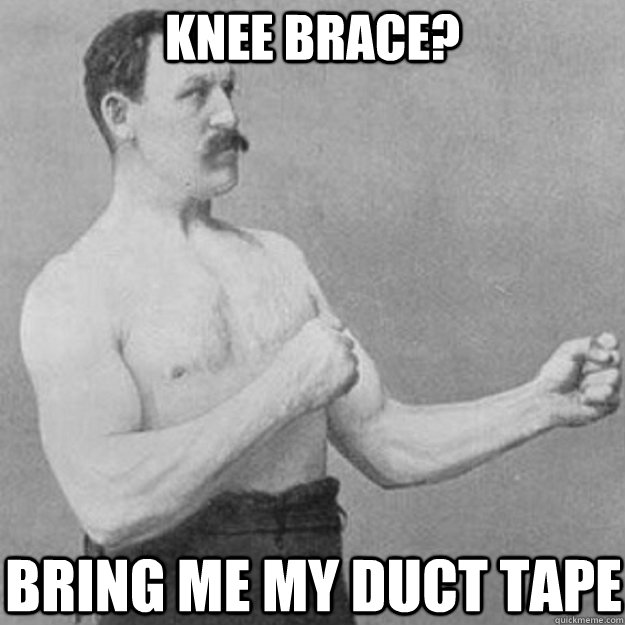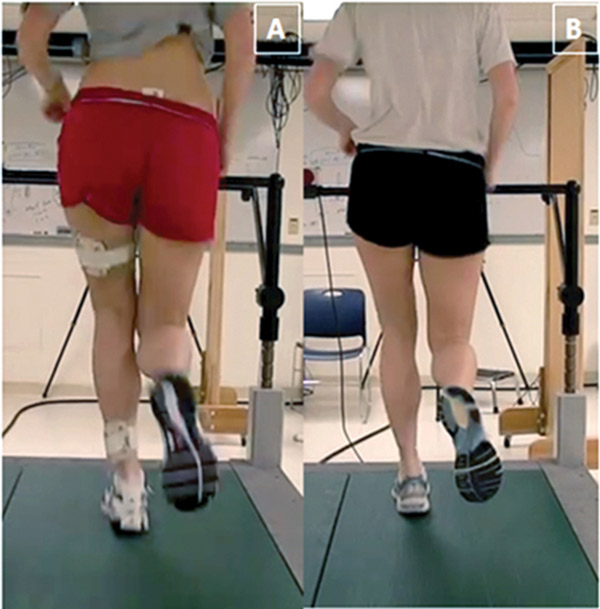Sittin Sideways: Training Lateral Chain Stability
Odds are that if you’re following a workout you got from an Instagram celebrity or off some free workout website, it will tend to be massively sagittal plane dominant. This means most of the stuff is done front to back or vice versa. Lots of squats, deadlifts, lunges, presses and pulls, with maybe the odd rotation or sideways lunge thrown in to help “prevent muscle imbalances.”

While these programs actually do work and will produce some noticeable strength and aesthetic gains, they do tend to miss a large volume of potential to what the body can actually accomplish, and avoid training some fairly impactful elements to performance in things like walking, running, carrying, bending, or twisting.
When doing something like walking or running, you’re bearing all of your weight on one leg which means maintaining balance becomes rather important if you want to stay shiny side up. To do this, the muscles along the lateral portion of the leg, hip, and torso have to work to keep the pelvis and spine in a relatively stable position over your base of support until your other foot hits the ground. The more loading is on the body during this single foot contact, the more precise and stable the hips and spine have to be to maintain this system and keep balanced.

Image credit: Ashlin Miller via http://lermagazine.com/article/retraining-fixes-faulty-gait-in-injured-runners
When this lateral hip drop happens, the active support system on the hip and spine have to work harder than usual to keep everything together. The muscles on the lateral hip are stretched rapidly and under tension (big eccentric loading), which can cause some damage over repetitive exposure. The mechanical alignment of the leg tends to alter in these cases as well, with an internal rotation at the knee being common. The knee doesn’t like to rotate under rapid loading, and if combined with some tibial rotation from some flat feet or weird toeing out movements could be a lot for that area to handle.
Reducing this collapse during heavier loading, as in strongman movements and heavy carries, becomes even more impactful to performance. McGill et al showed that the muscles with the highest activation shown on EMG during a single sided suitcase carry among elite strongmen were the erector spinae and the latissimus dorsi on the side holding the load during foot plant of the opposing side. This means those muscles were working to hold the spine and pelvis together and prevent the load on the opposite side of the body from bending it in the direction of loading. Think of that every time you carry all the groceries into your house at once.

In severe cases of inability to stabilize through the frontal plane, you would see more of a lateral lurch as the individual walked to try to get their center of mass vertical over their base of support and reduce the need of the muscles to hold them in place. This is common with neural defects, significant osteoarthritis of the hip or knee, or following joint surgery.

In either case, using a sagittal plane dominant program may not adequately address the concerns of maintaining hip and spine positioning over increased loading. However, it’s not hard to do some stuff to address it effectively, and scale the challenges based on the individuals ability. The good thing is that in many cases, just doing the activity for longer or with more weight is all you would need to have the same movements work for everyone from a total hip replacement recipient toan elite strong man competitor.
We can break down the types of training into the following dimensions.
#1: Positional holds
One of the easiest assessments I use with clients to get a lot of information from them on how well adapted their lateral chain stability is requires them to simply stand on one foot and stay there for 10-20 seconds. If this is an easy task, they won’t put the other foot down or wobble on the foot they’re standing on. If they have some issues, their foot will dance all over the place, their knee will collapse inward, their hips will drop and they’ll look like they’re standing on some weird device used in Cirque du Soliel performances.

For a lot of people with issues simple standing on one foot, starting small with just holding a position can be massively impactful to seeing initial improvements in motor control, strength and endurance. You can do this through a bunch of different ways.
Even simply standing on one foot for time can be enough of an exercise challenge:
https://www.youtube.com/watch?v=fiXWGDGPcn4
For each of these tasks, a good goal to shoot for to start would be to hold stable for 10 seconds, and build up all the way to 2 minutes on each side. If you can do that, you’re golden and could easily progress to more challenging loading patterns and objectives. You could go to more challenge even if you can’t hold for 2 minutes, but it’s a safe target to shoot for.
#2: Walking Stuff
Simply walking can be a big enough challenge to lateral stability to produce a training effect for a lot of people. The key is to make sure you’re not leaning side to side like an Ariana Grande video while you’re walking, stay stable and centered over your midline, and use a full fluid range of motion.
Beyond this, we could include loaded carry variations of different intensities and durations.
https://www.youtube.com/watch?v=c93mGtzBhJs
In each instance, you’re just walking over a set distance with loading in various positions, each of which imposes different challenges to your ability to maintain that hip and spine positioning while staying balanced over your feet.
#3: Single Leg Movements
Because the working leg is lateral to your center of gravity, there’s a potential for hip drop or torso rotation during the movements unless it’s being controlled and some level of stability is being encouraged. Because of this, even a sagittal plane movement performed through single leg will have a frontal plane stability challenge in place.
This opens up a few possibilities to your training with basics but beneficial movements.
So how should you program these lateral stability exercises? A lot of that comes down to whether you’re working on a specific deficiency in lateral stability or just keeping it in tip-top shape. If you have a massive hip drop when running or walking, or find you can’t keep balance when carrying challenging loads, it would be a good idea to include 1-2 lateral stability exercises outlined here for every 1 sagittal plane movement you do in a workout until you feel less of a challenge. For people just looking to stay strong in all dimensions, you might be able to get away with 1 lateral stability exercise for every 2 sagittal plane movements, or might even benefit from a more 1:1 ratio.
To reduce the challenge, either reduce the total volume of reps and sets, distance walked, or time spent holding a position. To increase the challenge, add volume, distance, time, or loading to the movements as you see fit and can maintain positioning.
One Response to Sittin Sideways: Training Lateral Chain Stability